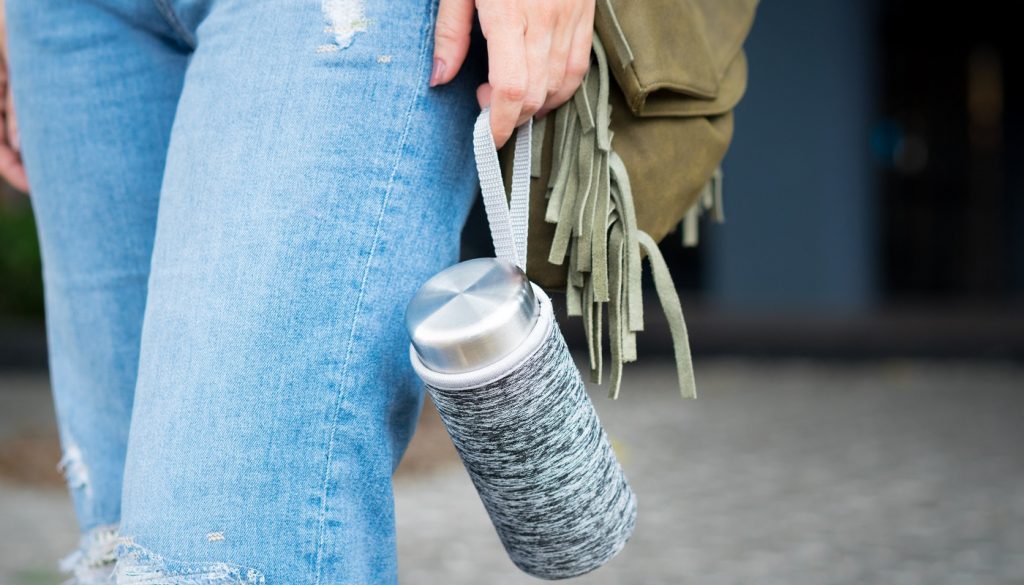When you live in Northern California, you know that climate change is very real, and very scary. Maybe you’ve also personally experienced an increase in extreme weather. Maybe that has served as a wake-up call. But what can you do to help the environment?
Fortunately, there’s plenty that you can do. (You just have to actually take action, step by step.)
Global warming can’t be addressed from just one angle. We need changes in consumer behavior to lower energy needs. We need legislation that spurs innovation forward. And we need massive changes in how we interact within our local communities.
There’s no time to wait for some magic outside source to save us. We need to do something now.
Here’s how you can help the environment:
Let’s get into it!
Lifestyle changes
First of all: ignore people when they say that consumer action doesn’t help the environment. Of course it does. Consumer choices drive market demand and lower carbon emissions.
Here are important ways to shift your lifestyle:
1. Eat less meat and dairy
Protein-rich foods tend to have higher carbon emissions than non-protein rich foods, and according to research from Our World in Data, we can see that beef has the highest carbon emissions.
Try to avoid beef and dairy when possible. And when you do choose to eat meat, go for chicken, fish, or eggs instead. This is a personal journey, and everyone will make their own choices. Some climate-conscious consumers will go completely vegan, while others will forego animal products a couple days a week.
To build up lasting habits, start slowly. Continually add more vegan recipes to your repertoire.
Get sustainable and minimalism living tips in your inbox.
2. Travel locally or less often
It’s a bummer when you learn that traveling is really bad for the environment. So many influencers are selling the dream of seeing a new country every month. But this isn’t sustainable. If you love to travel, try to go shorter distances or travel less frequently.
Or, you might opt for a train trip instead of a road trip. That’s what my family will be doing next summer! This is no easy fete in the US, but by purchasing tickets with Amtrak, we can hopefully preserve the rail systems we do have, and showcase consumer demand for additional routes. (Fingers crossed.)
3. Rethink your clothes shopping habits
The fashion industry accounts for 10% of global carbon emissions. Considering that most middle class people in developed nations have far more clothes than they need, this is a huge problem.
Fashion is fun. It’s part of our self expression. I’m not going to deny it’s importance.
There are a few different solutions. We can thrift, shop less often, only buy a replacement when something doesn’t fit anymore or wears down, and purchase items that will last.
Every generation of young adults falls in love with thrifting. I mean, how cool is it to pull off vintage clothes? Very cool. But this habit tends to fall away as adults get busy. Living in a small town, it’s really hard to find quality clothes at our small, dinky thrift stores.
That’s why I prefer Poshmark. You can purchase used clothes from thousands of sellers (kind of like Ebay) and search by brand and size.
4. Change your typical thermostat setting
In the summer, do you keep your house at 70? Try pushing that to 75. Using a fan in the room you’re in might consume less energy than keeping the AC on blast. And in the winter, if you keep the thermostat at 70, try to lower that down to 65 or even 62. Grab your favorite sweater (or 3) and get cozy.
5. Upgrade to more energy-efficient appliances when it’s time
Rushing out and buying a bunch of stuff is a surefire way to make your sustainable lifestyle…not very sustainable. You don’t need to run around replacing everything. But when you are ready to make improvements (maybe something breaks, or that long-saved-for kitchen renovation is finally a reality), choose more energy-efficient appliances. You’ll save a lot more on your bills.
6. Heat and cool smaller spaces—or downsize your home
If you have a large house, don’t heat and cool the whole thing. You can shut doors and vents to only use your AC or heating in the area of the house where you’re currently hanging out.
Square footage is a major contributor to Americans’ carbon footprints. If you’re heating and cooling a massive house, maybe it’s time to make a plan to downsize? Maybe you could set your sights on downsizing as soon as the kids have flown the coop, or you’ve achieved some other important milestone.
Oh, and if you don’t have a massive house, go ahead and give yourself to stop lusting after one.
7. Reduce single-use plastic
Set a goal to use less single-use plastic every month. You could make a new product swap each month, or tackle a new habit. For example, one month you might switch to shampoo bars, and the next month you might start making your own almond milk.
Relying less on single-use plastic is a marathon, not a sprint, for most people. I recommend starting with your bathroom products. That’s a lot less daunting than starting in the fridge or pantry. Check out our top picks for zero waste deodorant and zero waste toothpaste.
8. Say no to throw-away decorations
When shopping for party or holiday decorations, just say no to cheap stuff that’s meant to be thrown away. Unless its biodegradable and made from a renewable resource, that decoration is probably terrible for the environment.
Instead, re-use your party and holiday decorations. Go for simple things like candles, or glass jars that you can fill with pine cones or candy corn.
9. Be mindful of the content you consume
We live in a culture of consumerism. The type of content we consume can make it very difficult to break free of that culture. How many times have you watched hauls on YouTube? How many times has an article or video made you want to buy something you didn’t need?
Break up with consumerism by being really mindful about what you are reading and watching. Instead of drooling over carbon-emitting products that also hurt your wallet, get in the habit of consuming content about eco living and zero waste recipes.
Activism
Activism means something different to everybody. Maybe you write letters, volunteer at letter-writing booths, and attend protests. Or maybe you simply want to donate to organizations that are doing activism you believe in.
10. Join an organization or local chapter
Citizens’ Climate Lobby has 595 chapters around the world. With your local chapter, you’ll find climate advocate trainings, in-person meetings, volunteer activities unique to your specific region and government entities. Most local chapters in the US are working towards passing The Energy Innovation and Carbon Dividend Act, H.R. 763/S. 3791. This bill proposes a fee on carbon when it’s extracted to help incentivize more market-driven innovation.
After all, Exxon studied climate change in 1981, discovered that they were contributing to it big time, and still did nothing.
Even if you can’t make the time to attend chapter meetings, you should still join their email list, which will give you a template to tell Biden and your senators what’s up.
11. Donate to conservation or climate legislation
Donate to a cause that you care about. Maybe that’s passing climate-protecting legislation like The Climate Reality Project’s Clean Electricity Payment Program. Or maybe that’s conservation like Save the Redwoods League or Nature’s Network. Consider what really matters to you when it comes to battling climate change and make regular contributions, even if it’s as low as $10 per month. Most organizations allow you to donate the same amount each month automatically.
12. Vote for politicians who prioritize our climate
I’m not going to tell you who to vote for. (I don’t even know where you live!) But what I will tell you is that you should vote for politicians who are taking real action to protect the climate. Whether you believe in stricter climate legislation or free market innovation, what matters is that you vote for politicians who are working towards solutions—instead of ignoring or denying this massive crisis.
Community efforts
How can we get our families involved with helping the environment? How we can make an impact at the community level—not just in our homes?
Here are some ways to help the environment as a community.
13. Talk with friends and family (without politicizing the issue)
The more people you can get on board, the better. We need to normalize helping the environment—not politicize it or keep it in the realm of “extreme activism.” Reducing our carbon footprint is something we all need to tackle. When talking to friends and family, share personal stories about why you’re doing this, what you’re doing, and how you’re choosing progress over perfection. Personal stories are proven to be more effective than sharing stats or scary weather news.
14. Find an accountability buddy or group
We need to stick together. Start a WhatsApp or other chat group with friends and family who are also reducing their carbon footprint. Encourage each other with by sharing recipes, favorite products, tips, and other forms of motivation.
15. Advocate for, patron, and donate to communal resources
The concept of community luxury is powerful. When we advocate for, vote for, patron, and donate to community resources, we improve the sustainability of our communities by maintaining spaces that can be accessed by all. Public parks and public pools offer the opportunity to enjoy new experiences, without everyone building their own mini resorts. The more people who patron these places, instead of building something similar at home, the better.
Remember: it’s a marathon. Choose one new action or habit every month, and keep going.





